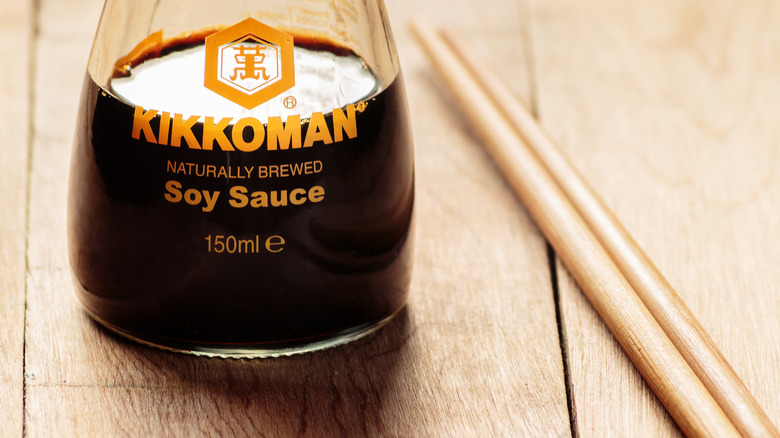Jet Tila Says This Is What Everyone Gets Wrong About Soy Sauce - Exclusive
You're certainly not alone if your understanding of Asian food is basic at best. Sure, we can all tell the difference between Chinese takeout and Japanese sushi, but the world of pan-Asian cuisine is extraordinarily vast and wide-ranging, utilizing a full range of regional ingredients and specialized techniques. However, for those who don't normally dine on Thai, Vietnamese, Korean, or Filipino food (and so much more), it's common to assume that reaching for the soy sauce to accompany whatever Asian dish you're about to enjoy is standard practice.
But before you decide to doctor up your next dinner, it's time to set the record straight for good. Leading the charge is Food Network star and pan-Asian culinary expert Jet Tila. Speaking exclusively with Tasting Table, Jet Tila revealed the number one misconception that most people have about soy sauce and what more Western diners should better understand about this popular condiment.
Soy sauce is a salt substitute, not a universal condiment
"Soy sauce is not the end-all and be-all of Asian food. That's the number one thing people get wrong," Jet Tila told Tasting Table. Unfortunately, this perception of soy sauce as the go-to for any and all Asian dishes goes back decades. "I blame my colleagues from the '70s," said Tila. "I won't mention his name, but [you] can't go on TV and say soy sauce is everything because it's not."
We can't confirm, but there's a good chance Tila was referring to chef Graham Kerr of the hugely popular show at the time, "The Galloping Gourmet." Regardless of who's to blame, over time, soy sauce has become almost synonymous with Asian food for many an inexperienced diner and home cook. This misconception means missing out on the full range of authentic flavors one could be enjoying while taking their meal to the next level.
As Tila explained, "Soy sauce is basically salt with a little bit of umami, but there are all these other seasonings in Asian cuisine that have salt and sweet and umami, more of a balanced flavor." He also highlighted some of the more traditional tastes of different regional Asian cuisines: "If you're cooking Chinese, it's oyster sauce. If you're cooking Thai, it's fish sauce." There's also hoisin sauce, tamari, gochujang, sambal ... The list goes on and on.
Furthermore, many of the dishes from your favorite local Asian restaurant don't use as much soy sauce as you might think. "If you put a little bit of chicken bullion in any Asian dish, you're probably going to get closer to that craveable restaurant flavor, [more so] than soy sauce," Tila said.
Keep up with the latest from Jet Tila by following him on Instagram and YouTube.

